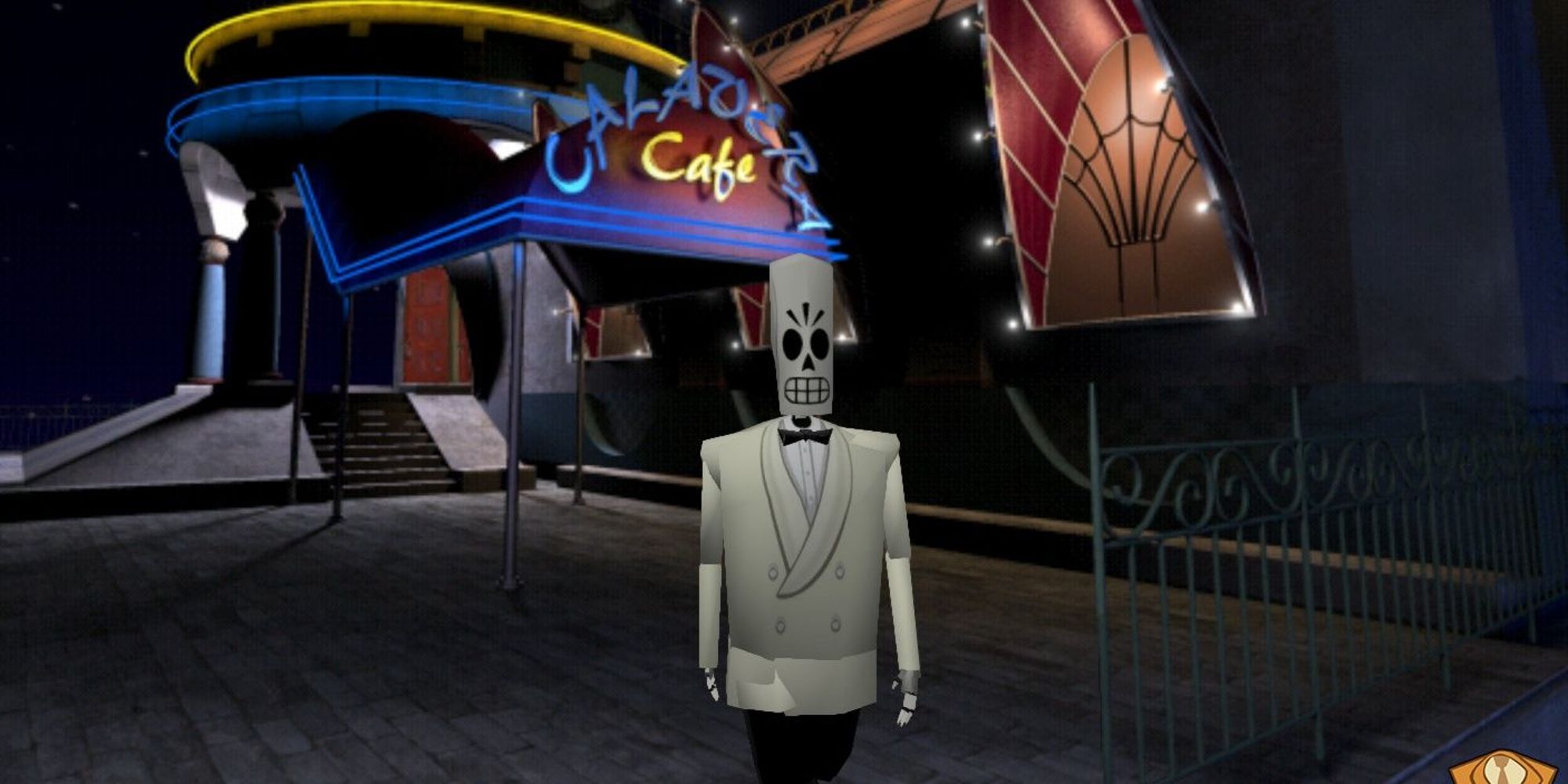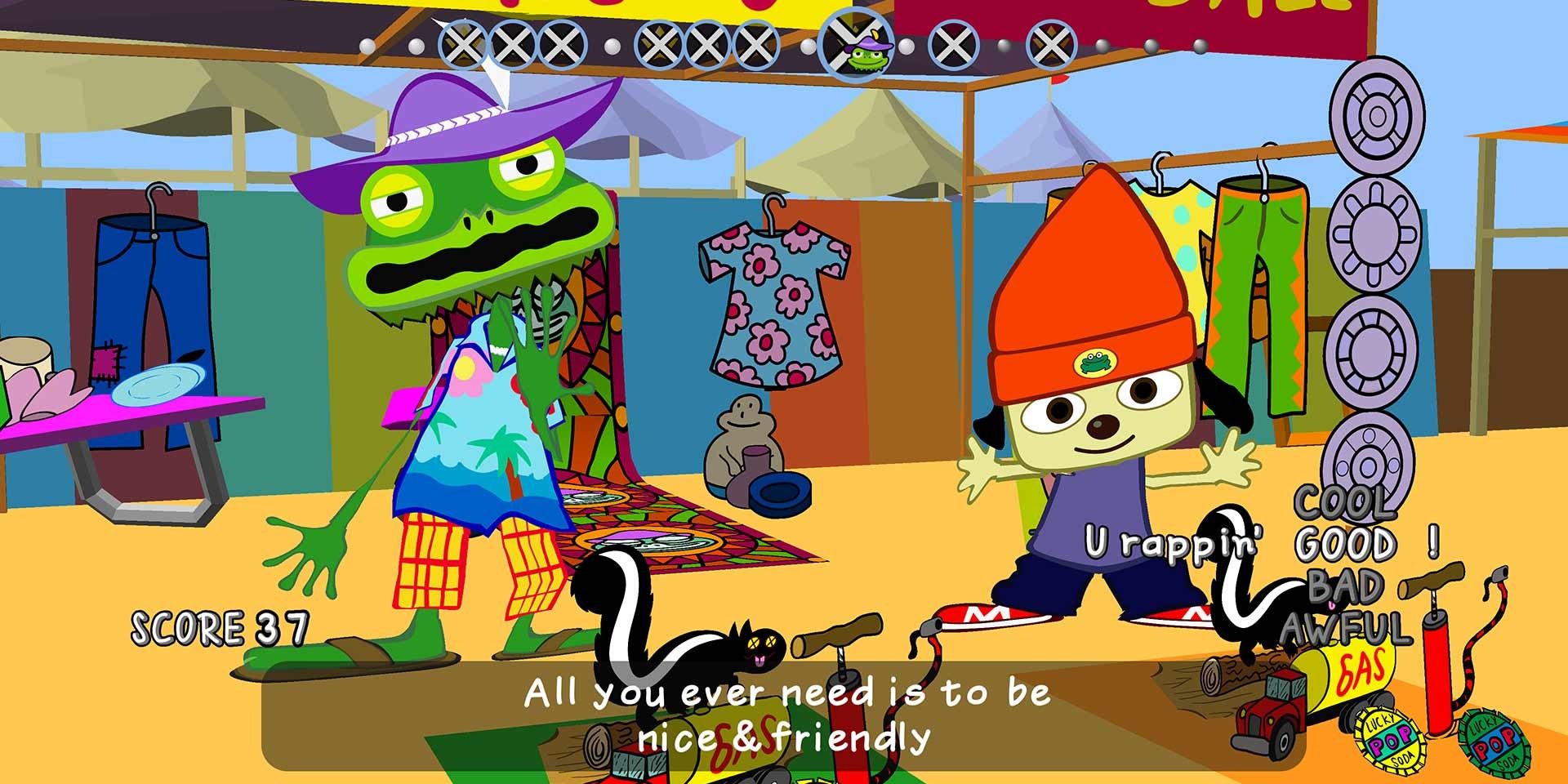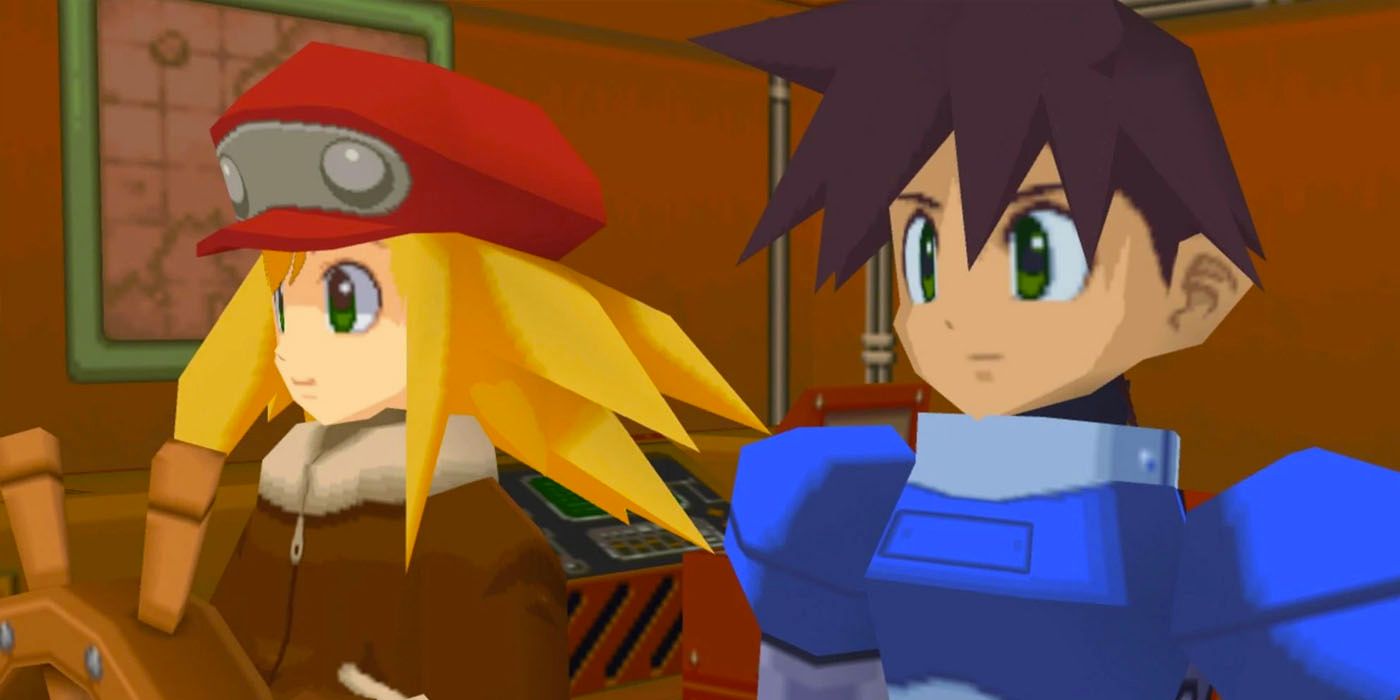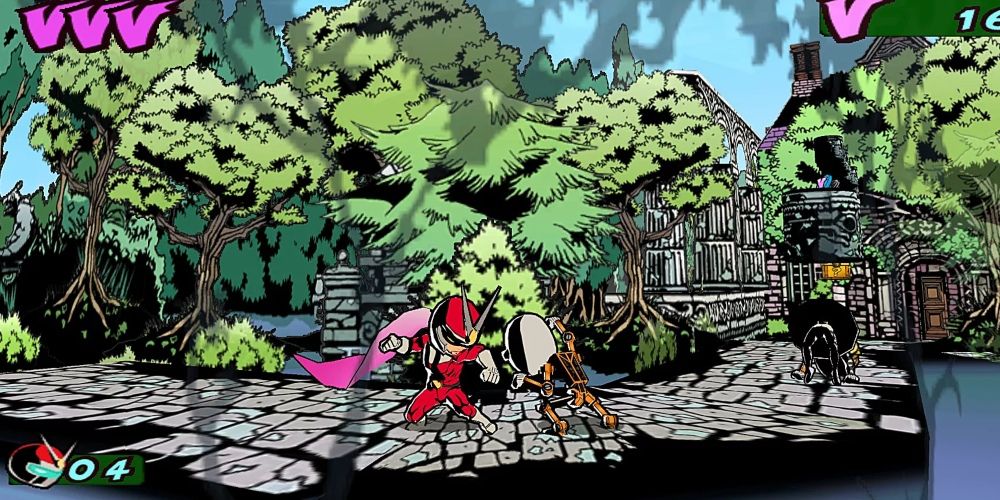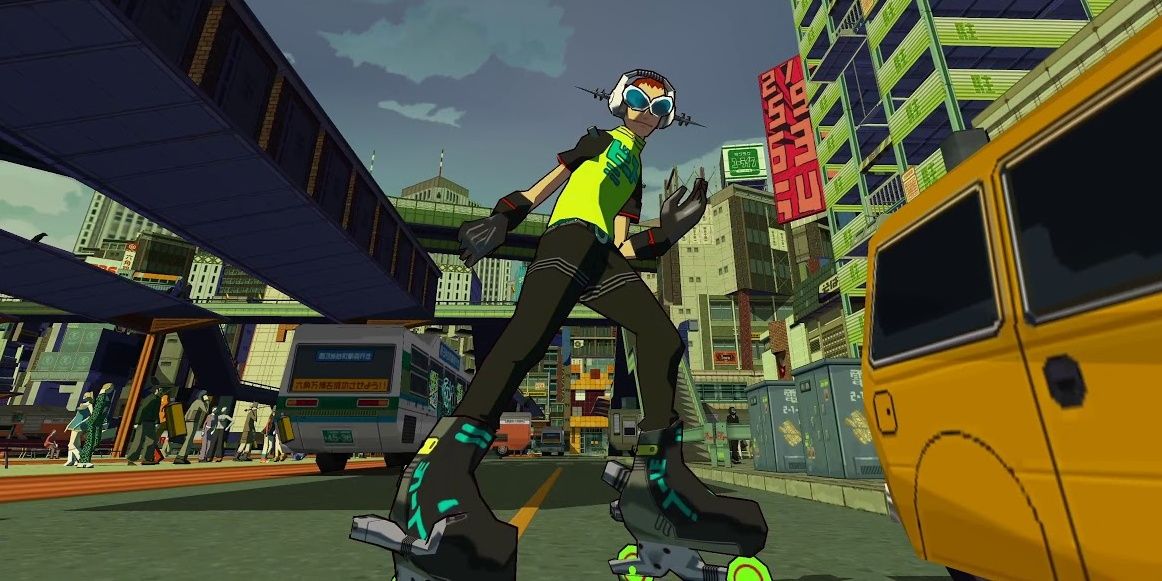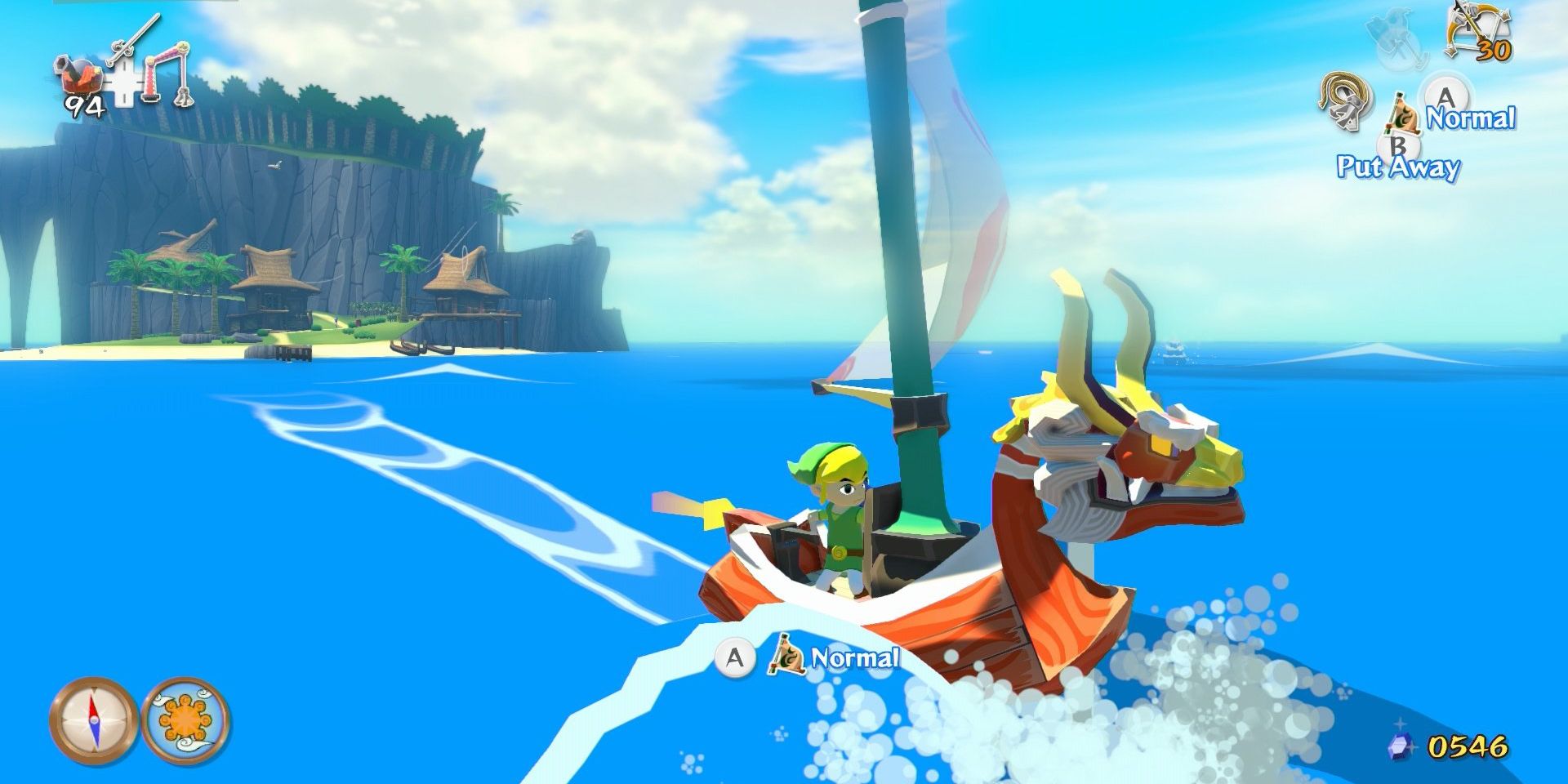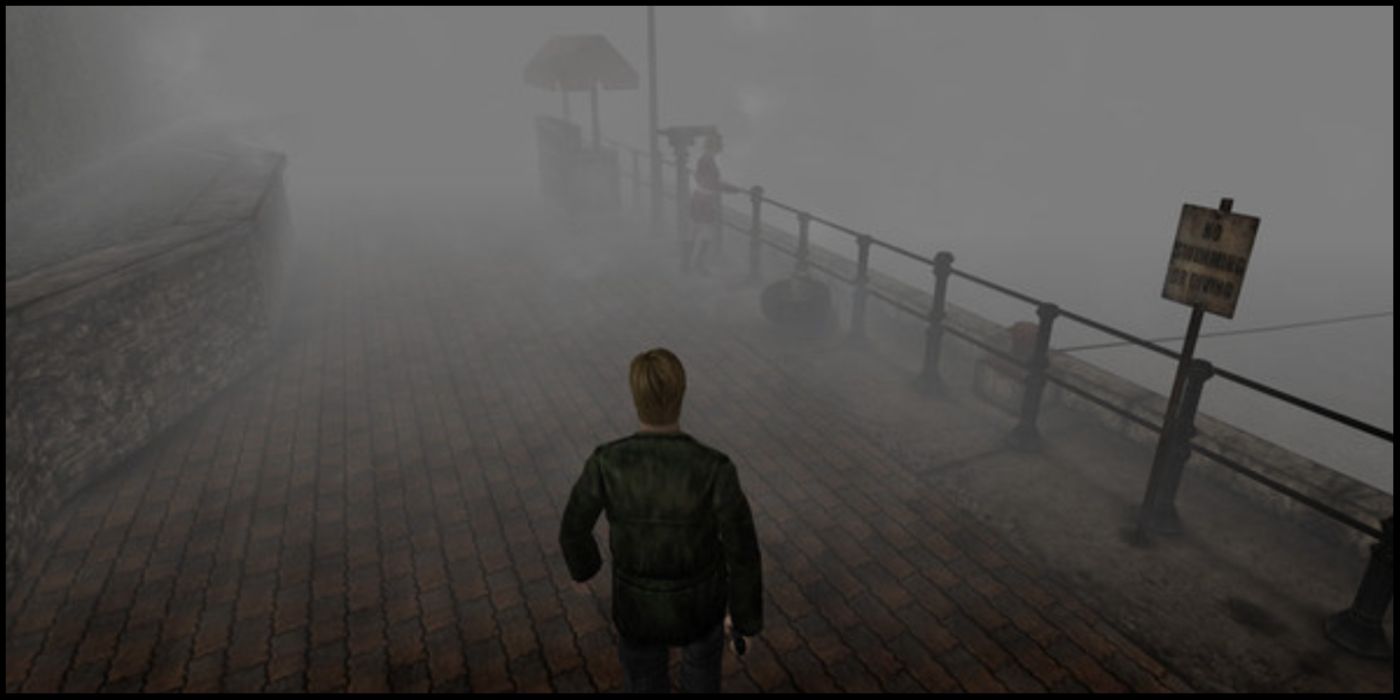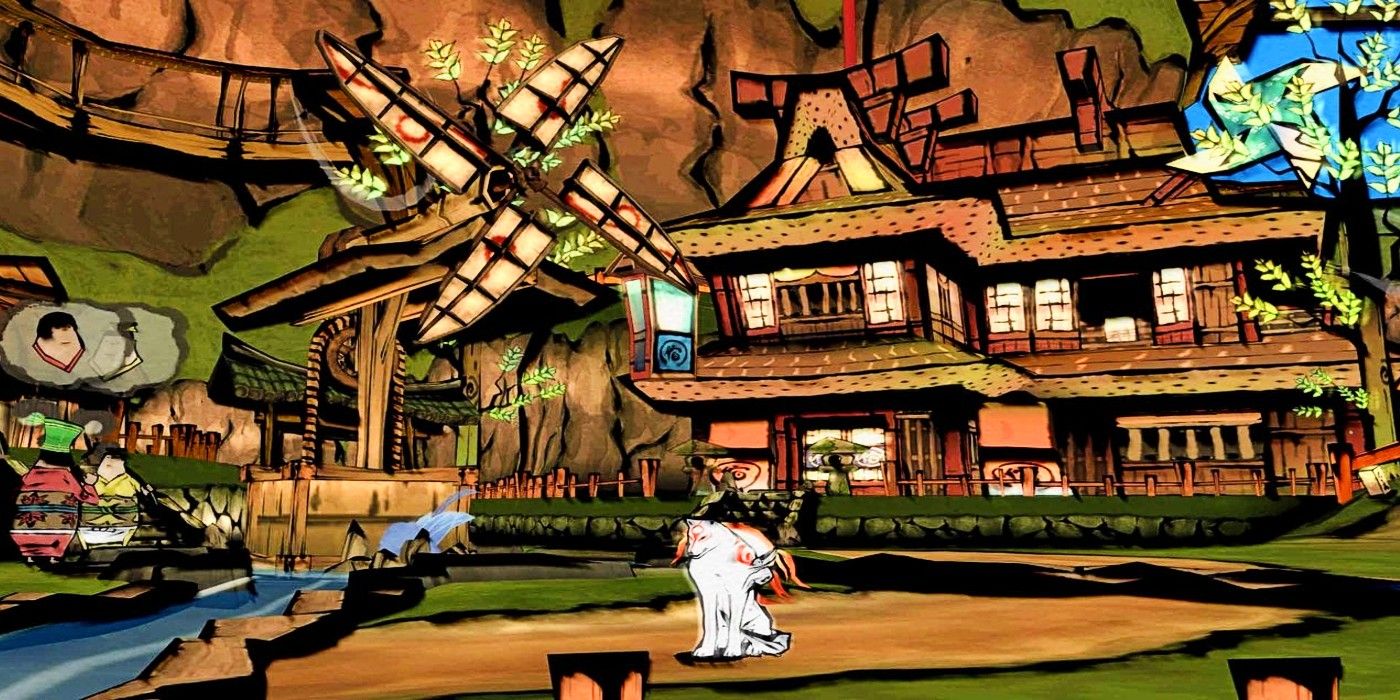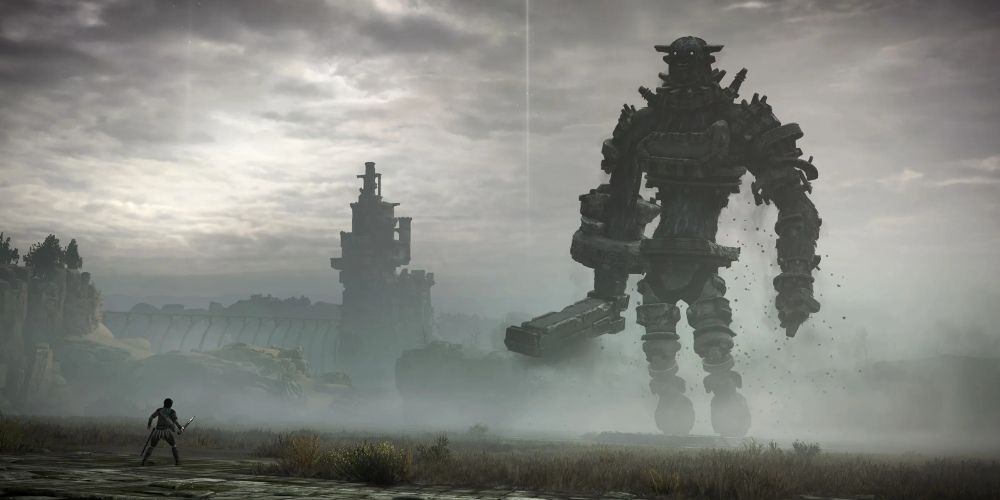There’s no denying that the vast majority of early 3D games have aged poorly decades after their initial release. While titles like GoldenEye, Tomb Raider, and Resident Evil turned heads when they first hit the scene, their low-poly models don’t stand up to scrutiny compared to modern titles. The tech at the time wasn’t powerful enough to realize the developers’ visions without making concessions.
However, by adopting a look which accommodates their hardware’s limitations, many polygonal classics like Grim Fandango and Mega Man Legends remain just as stunning years later. These games prove that while technology constantly moves forward, good art-direction never ages.
10 Grim Fandango
With the commercial success of Full Throttle under his belt, Tim Schafer had more leeway to realize a unique blend of film noir and Dia De Los Muertos. Knowing the limitations of 3D graphics of the time, Schafer’s team adopted an art-style which accommodated the polygonal restrictions while immersing players in a fantastical land of the dead.
Peter Chan and Peter Tsacle helped bring Shafer’s unique vision to life with its stylized calaca cast and atmospheric locales. As a result, Grim Fandango won the hearts of gaming critics in its 1998 release, making its commercial failure even more tragic.
9 Parappa The Rapper
The Parappa the Rapper franchise comprising three rhythm titles. Each centered on the exploits of several anthropomorphic animals who used the power of music to overcome their daily troubles. The visuals involved flat 2D characters who inhabited a mostly polygonal world.
With this approach, Nana-On Sha enriched Rodney Greenblat’s character designs without sacrificing these quirky characters’ charm and expressiveness. The first title was remastered for the PlayStation 4 with all its rough edges smoothed out and presented in glorious 4K. Regardless, each title has held up visually thanks to its appealing art.
8 Mega Man Legends
Years before cel-shading was really a thing, Capcom emulated the look of hand-drawn animation with Mega Man Legends‘ varied polygonal cast. At a time when technological constraints made facial animations unfeasible, the Blue Bomber and company were some of the most expressive and animated characters the PlayStation had seen.
All of this was bolstered by unique characters such as the Bonne family and their dutiful servbots. Mega Man Legends had one proper sequel and a spin-off before laying dormant for many years. A third entry for the 3DS was tragically canceled following Keiji Inafune’s departure from Capcom.
7 Viewtiful Joe
Hedeki Kamiya followed up on Devil May Cry with a 2.5D title that evoked both Japanese sentai media and American superhero comics. Viewtiful Joe thrusted players into the vibrant world of Movieland where the hero Captain Blue was vanquished by the forces of evil.
The eponymous Joe must save his girlfriend Sylvia and this celluloid civilization from the Jadow. The game created a comic book aesthetic with its cel-shaded visuals and colorful adversaries. Unlike many of Capcom’s classics, the Viewtiful Joe titles have yet to become playable on modern platforms.
6 Jet Set Radio
When discussing cel-shaded games, Jet Set Radio often gets mentioned. Developed by Team Andromeda, the series was conceived out of a desire to do something completely different from the fantasy-based Panzer Dragoon titles.
Taking huge inspiration from anti-establishment media like Fight Club,Jet Set Radio put players in control of several skating punks who took on an oppressive police regime. The game’s vibrant environments and eclectic cast made for one of the Dreamcast’s most visually stunning titles. Unfortunately, its much improved sequel, Future, has yet to see a re-release on modern machines.
5 The Legend Of Zelda: Wind Waker
For the Zelda series’ Gamecube debut, Eiji Aonuma’s team adopted a more cartoony and colorful design akin to a Disney animated feature. It featured the most expressive character models Zelda had ever seen. Likewise, its incarnation of Link stood out as a notable highlight.
While Wind Waker‘s cel-shaded visuals proved polarizing among the fandom, they ensured the game would look just as gorgeous decades after its initial release. By contrast, the subsequent title, Twilight Princess, went for a more realistic and muted look which aged less gracefully years later.
4 Silent Hill 2
Konami’s second foray into the foggy town of Silent Hill would benefit considerably from the the PlayStation 2’s increased horsepower. Since draw distance was put on the back burner, Masashi Tsuboyama’s team devoted more detail to the game’s characters and environments.
As a result, Silent Hill‘s models were some of the most intricate and expressive that the system had seen up to that point. In addition, the locales James braved in the game boasted a daunting atmosphere that was almost unparalleled. While many critics decried the game’s fog, others could see it for the deliberate artistic choice that it was.
3 Okami
The swan song for Capcom’s Clover branch, Okami was a major departure from Hideki Kamiya’s over-the-top and bombastic action titles. While the game originally aimed for a realistic look, it later adopted stylistic cel-shaded graphics befitting of its mythical subject and novel brush mechanic.
Okami felt like a fully playable Sumi painting bolstered by its regal art-direction and distinct character design. Unfortunately, it had the misfortune of being released during the herald of next gen consoles like the Xbox 360. As a result, many consumers overlooked Okami.
2 Journey
Following Flower‘s success, Joan Chen once again provided gamers with an emotionally resonant title called Journey. This PlayStation 3 classic put players in control of a mysterious robed figure as they traversed through a vast desert to reach the top of a majestic peak.
While most titles in this generation were pushing polygon counts and cinematics, Journey went for a considerably minimalist style. The game eschewed dialogue and exposition in favor of using abstraction and striking visuals to convey its ideas. The result was one of the gaming medium’s most unforgettable pilgrimages.
1 Shadow Of The Colossus
Long before brown and gray became all the rage in HD gaming, Shadow of the Colossus used a muted color pallette to great effect. Where it proved ill-fitting in various titles, the style gave the game a sense of melancholy and loneliness, which was brilliantly juxtaposed by the areas that emphasized the colors.
Each of the aforementioned colossi were intricately detailed and well-animated, while the world they inhabited was suitably vast and majestic. Shadow of the Colossus received a remake on the PlayStation 4, and it proved a work of art no matter what platform gamers played it on.

